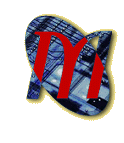In the wake of the article by Rossitza Daskalova on Art and new technologies in Montréal on the occasion of the opening of Technoboro, which appeared in our last issue, it seems important to us to take a look at the works conceived for the Web by Québecois artists. In fact, in our section devoted to Web projects, we have only commented on a single work realised by a Québec artist until now! This article serves therefore as an initial modest overview ...and is incomplete with the goal of remaining open to other future projects, and in this way respects the constant evolution of the Web. It is not a repertorary of all the works and is not the final word on this issue. In addition, in order to keep from isolating the production of Québecois aritists from that of other artists, certain works named here are presented in greater detail under the heading Artworks on the Web of this same edition, and others will be in the future, on a regular basis.
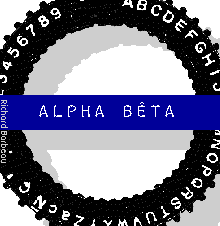 The Internet has become an important medium for text, and certain artists focus more specifically on this aspect in their works. This is the case with Richard Barbeau, for example, who offers on his site projects comprised of visual games on language and representation. With a different approach, Claude Lamarche-2/NPC proposes with Trans-Late an ensemble of word and expression games which follow each other and focuses on translation and the derivitives of meaning. With humour or even with a touch of irony, these artists pay hommage to the French language and insist on its presence on the Web. They join, in this respect, other artists who question the diffusion of text in a language other than English, the language which presently dominates the network.
The Internet has become an important medium for text, and certain artists focus more specifically on this aspect in their works. This is the case with Richard Barbeau, for example, who offers on his site projects comprised of visual games on language and representation. With a different approach, Claude Lamarche-2/NPC proposes with Trans-Late an ensemble of word and expression games which follow each other and focuses on translation and the derivitives of meaning. With humour or even with a touch of irony, these artists pay hommage to the French language and insist on its presence on the Web. They join, in this respect, other artists who question the diffusion of text in a language other than English, the language which presently dominates the network.
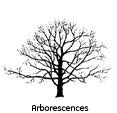 In a general way, texts accompany the image in many projects and reinforce the narrative and sequential effects permitted by the medium. For example, Chagrins by Élène Tremblay recounts a dramatic history which splits in two, creating in this way two possible paths, two versions which meet. Élène Tremblay has in fact organized the virtual exhibition Arborescences which takes account of the new avenues offered to photography by the Internet. Even the title of the event underlines the idea of multiple potential paths, of new narrative structures made possible by the Internet. In the same vein, Carol Dallaire assembles projects comprised of digital images and texts in Les lieux communs, an ensemble of albums which showcase fictive characters presented in an intimate way. In Intersections-conjonctions, Karen Trask offers an autobiographical story which also treats the issue of identity. The Love Money Weather Project by Petra Mueller takes the form of an intimate journal where meteorological conditions qualitatively transform the affirmations which accompany them. In a completely different tone, Liquidation created by writer Michel Lefebvre and photographer Eva Quintas, functions like a humourous photo-story.
In a general way, texts accompany the image in many projects and reinforce the narrative and sequential effects permitted by the medium. For example, Chagrins by Élène Tremblay recounts a dramatic history which splits in two, creating in this way two possible paths, two versions which meet. Élène Tremblay has in fact organized the virtual exhibition Arborescences which takes account of the new avenues offered to photography by the Internet. Even the title of the event underlines the idea of multiple potential paths, of new narrative structures made possible by the Internet. In the same vein, Carol Dallaire assembles projects comprised of digital images and texts in Les lieux communs, an ensemble of albums which showcase fictive characters presented in an intimate way. In Intersections-conjonctions, Karen Trask offers an autobiographical story which also treats the issue of identity. The Love Money Weather Project by Petra Mueller takes the form of an intimate journal where meteorological conditions qualitatively transform the affirmations which accompany them. In a completely different tone, Liquidation created by writer Michel Lefebvre and photographer Eva Quintas, functions like a humourous photo-story. 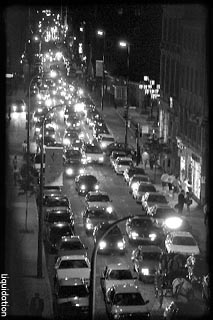 This work of fiction was also transmitted on the radio, and it is possible to listen to pre-recorded episodes. The launching of the CD-Rom prototype version of the project was held at Galerie Skol on May 1st 1998.
This work of fiction was also transmitted on the radio, and it is possible to listen to pre-recorded episodes. The launching of the CD-Rom prototype version of the project was held at Galerie Skol on May 1st 1998.
Studio XX's site welcomes numerous Web projects created by women in its section Night Light and in that of the festival Maid in Cyberspace. Certain works are interested specifically in the rapport that women have with technology. Most of the artists benefit from the support of the centre and in fact produce works of a great variety. Again, many works are organised by text and image. Certain insistant themes can be discerned. For example, a lot of importance is placed on exchange in the project by Jeannette Lambert and Raquel Rivera, Emerging from Erasure or in that of Jessica R. Carpenter, Jennifer. This theme defines the formal aspect of the works and accentuates the exchange from person to person, which is characteristic of the medium.
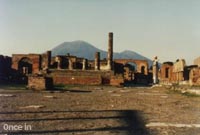 Among the projets by Catherine McGovern, coordinator of the programmation at StudioXX, Once in explores the boundaries of space with the help of photographs and text, transporting us to diverse landscapes and foreign places. Many works take this approach to the medium. More specifically, they are interested in the definition and the apprehension of a new space, in cyberspace, and evoke it in a metaphoric way through travel, for example. The work by Leah Lazariuk, Virtual Squat also questions this new space in a totally different way, in proposing to the visitor to conceive of it as an alternative space and to act in a nomadic way. The project Amazone by Pascale Trudel constitutes another excellent example, through integrating animated images and sound. Daniel Villeneuve's site shows a succession of spaces which transpose an installation presented at the Musée d'art contemporain in 1997.
Among the projets by Catherine McGovern, coordinator of the programmation at StudioXX, Once in explores the boundaries of space with the help of photographs and text, transporting us to diverse landscapes and foreign places. Many works take this approach to the medium. More specifically, they are interested in the definition and the apprehension of a new space, in cyberspace, and evoke it in a metaphoric way through travel, for example. The work by Leah Lazariuk, Virtual Squat also questions this new space in a totally different way, in proposing to the visitor to conceive of it as an alternative space and to act in a nomadic way. The project Amazone by Pascale Trudel constitutes another excellent example, through integrating animated images and sound. Daniel Villeneuve's site shows a succession of spaces which transpose an installation presented at the Musée d'art contemporain in 1997.
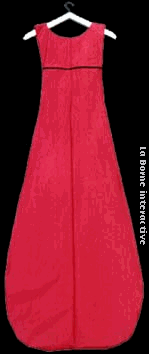 Through borrowing the form of a voyage as well, Lune Noire by Jean-Pierre Thomin is a Web version of a project which questions the boundaries of space and time in making reference to the train, another older form of transport. La Borne interactive (100% carton) by Yann Sérandour, is the cybernetic version of a project presented within the framework of a recent manifestation in Rennes. The work creates affiliations between physical objects sent through the mail and images of unusual objects transmitted by electronic mail. Restau U Dijon by Michèle Waquant also proposes a Web version of an exhibition. The progressive multiplication of a photograph creates a new mosaic, identifying it to the fragmentation of the digital image, and therefore to the space of the screen. Isabelle Hayeur's work Si/jamais also constitutes an exploration of space through the use of landscape.
Through borrowing the form of a voyage as well, Lune Noire by Jean-Pierre Thomin is a Web version of a project which questions the boundaries of space and time in making reference to the train, another older form of transport. La Borne interactive (100% carton) by Yann Sérandour, is the cybernetic version of a project presented within the framework of a recent manifestation in Rennes. The work creates affiliations between physical objects sent through the mail and images of unusual objects transmitted by electronic mail. Restau U Dijon by Michèle Waquant also proposes a Web version of an exhibition. The progressive multiplication of a photograph creates a new mosaic, identifying it to the fragmentation of the digital image, and therefore to the space of the screen. Isabelle Hayeur's work Si/jamais also constitutes an exploration of space through the use of landscape.
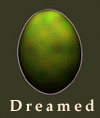 Finally, other projects focus essentially on interactivity, on an active echange with the visitor. This is the case with the work by Greg Garvey, The Automatic Confession Machine, which we have already commented on in an earlier edition. The same artist proposes another project of the same nature, Gender Bender which functions like a personality test which reveals the masculine and/or feminine side of the visitor. Dreamed* by Fréderick Belzile invites surfers to share their dreams. In the same vein of ideas, Pascale Malaterre proposes to visitors to create their own *Ex-voto and to see those transmitted by other participants. As for the site
Finally, other projects focus essentially on interactivity, on an active echange with the visitor. This is the case with the work by Greg Garvey, The Automatic Confession Machine, which we have already commented on in an earlier edition. The same artist proposes another project of the same nature, Gender Bender which functions like a personality test which reveals the masculine and/or feminine side of the visitor. Dreamed* by Fréderick Belzile invites surfers to share their dreams. In the same vein of ideas, Pascale Malaterre proposes to visitors to create their own *Ex-voto and to see those transmitted by other participants. As for the site  Doyon/Demers created by performance artists Hélène Doyon and Jean-Pierre Demers, it allows visitors to construct objects from models offered on the site and ready to use, among others. The project Eugénie* by Julie Méalin, Valérie Jodoin and Éric Mattson is intended to be a Virtual Insemination Laboratory
Doyon/Demers created by performance artists Hélène Doyon and Jean-Pierre Demers, it allows visitors to construct objects from models offered on the site and ready to use, among others. The project Eugénie* by Julie Méalin, Valérie Jodoin and Éric Mattson is intended to be a Virtual Insemination Laboratory 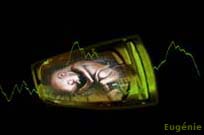 which allows the visitor to conceive a virtual lineage with personalities from diverse artistic and political milieus.
which allows the visitor to conceive a virtual lineage with personalities from diverse artistic and political milieus.
As is the case throughout the world, more and more artists from Québec are turning towards the Internet. Many of the artists who are interested in this medium are already known for other types of production. They come from disciplines such as photography, video, or other domains which implicate image technology. Still others have exploited numerous styles in their previous work by incorporating image and sound within installations or performances. In a general way, these practices are charaterised by the expansion of the work in time. In some way, these artists have turned towards the Internet because their interests have naturally brought them there. They find in this medium new possibilities which permit them to prolong their reflection, their artistic research and to pass beyond the boundaries of their disciplines.
Sylvie Parent
*These works are presented in greater detail in the section Artworks on the Web of the current edition of the Electronic Magazine.
